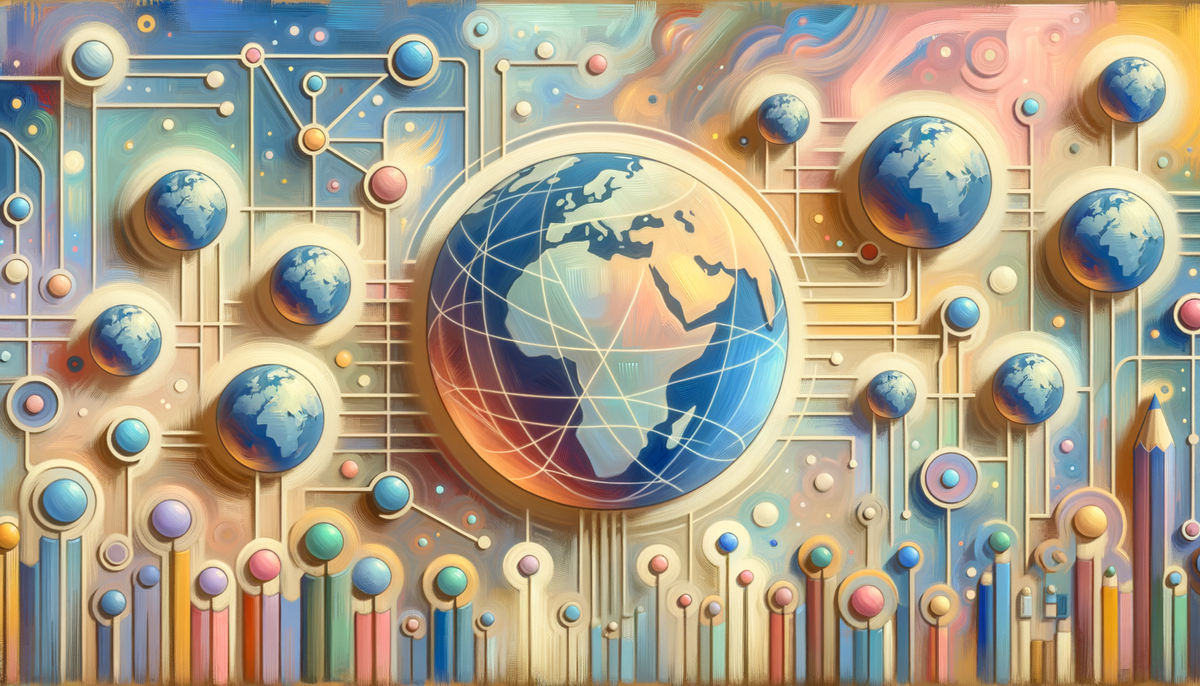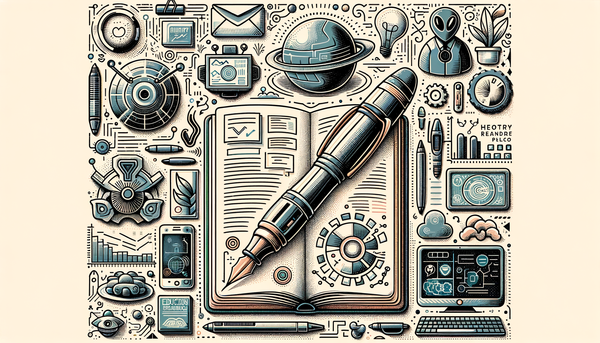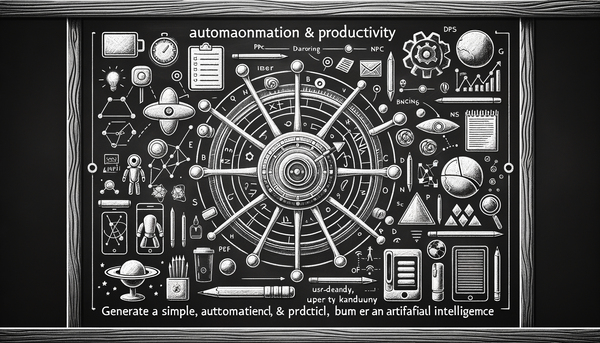Using Artificial Intelligence in Business Automation: The Latest Tool for Success

This comprehensive piece examines recent transformative developments in the artificial intelligence arena—from SoftBank's bold pivot amid a daunting financial loss to the creative revolution enabled by generative AI in media, the rise of AI agents reshaping business automation, and the practical enhancements for simplifying tax-related tasks. The article dissects these topics in-depth, offering insights, critical analyses, and cross-references to the latest industry conversations, while linking to our AI.Biz podcast updates for a broader context.
SoftBank’s Bold AI Investment Strategy in the Face of Financial Challenges
SoftBank, one of Japan’s foremost conglomerates, recently reported a staggering $2.4 billion loss amid its plans to invest heavily in artificial intelligence, as reported by the Financial Times. This move may appear paradoxical at first glance: how does a company reconcile enormous losses with a high-stakes investment in an emerging technology? Yet this is emblematic of a broader narrative in the tech world, where the interplay between risk and innovation often drives industry evolution.
CEO Masayoshi Son has been a compelling advocate for the transformative power of AI. Facing economic headwinds and market volatility, Son argues that a strategic pivot towards AI is not merely a defensive tactic but an offensive one. In his words, the company’s transition is “a strong pivot toward AI that could not just stabilize the financial outlook but ultimately ignite growth in unpredictable markets.” In doing so, SoftBank is betting on AI as the golden ticket to revitalize its fortunes—a concept that resonates with many modern business strategies where technology is seen as both a catalyst for disruption and renewal.
One must recognize, however, the inherent risk. AI investments are not a panacea, and their return relies on navigating complex, dynamic economic environments. The broad market slowdown, shifting consumer behavior, and the relentless pace of technological innovation imply that SoftBank’s journey will be fraught with uncertainty. Yet, history has repeatedly shown that crises can engender innovation. Just as the industrial revolution was born out of necessity and significant economic upheaval, this current phase may well define the future blueprint of business operations.
“Challenges are what make life interesting; overcoming them is what makes life meaningful.” – Inspired by various leaders in the technology sector
The critical takeaway here is the resilient spirit of companies like SoftBank. Despite severe financial setbacks, the determination to innovate and adapt drives them to invest in technology that promises not only efficiency but also a reevaluation of traditional business models. SoftBank’s journey serves as a case study in high-stakes corporate reinvention, wherein the pursuit of future technologies such as AI is seen as essential to overcoming current vulnerabilities.
Generative AI: Revolutionizing Creativity in Media and Beyond
In an equally inspiring narrative, the CEO of Media By Mother has demonstrated the innovative capabilities of generative AI. While the financial and operational challenges of traditional business are significant, AI-powered tools are transforming how creative and strategic pitches are developed. An insightful article on Digiday highlighted how the CEO crafted a noteworthy pitch during the holidays.
This approach leverages generative AI not only for its speed and efficiency but also for its ability to refine narratives and provide new angles that might be overlooked by human minds alone. As artificial intelligence reduces the time required for brainstorming and drafting, media professionals find themselves liberated to explore more creative and uncompromising ideas. The result is a transformative blend of creativity and technology, where traditional storyboarding processes are being reimagined through advanced algorithms and natural language processing.
Historically, the art of storytelling has always been a human pursuit. However, modern tools encourage us to view AI as a collaborator. Reflecting on a famous observation by Stephen Hawking, "Artificial intelligence is a tool, not a replacement for human intelligence," we begin to understand that AI’s role in content creation is that of an enhancer rather than an eliminator. By automating repetitive tasks and generating initial drafts, creatives can focus on refining the narrative and ensuring the content resonates with audiences at a deeper level.
This evolution represents more than a technical augmentation; it signifies a paradigm shift in the creative process itself. The combination of human insight and AI-driven analysis opens the door to more dynamic, multimodal storytelling. In some cases, the immediacy of generative AI has allowed leaders to produce pitches in a fraction of the time typically required, turning ideas into polished presentations imbued with both technological finesse and rich, creative depth.
For those curious about the tangible benefits of this technology, consider a scenario where a marketing team must quickly launch a campaign during a breakthrough moment. The generative AI swiftly provides a baseline narrative, and with minimal adjustments, the human team can inject personal insights and strategic nuance to finalize the pitch. This cooperative dynamic promises compliance with rapidly shifting market conditions while ensuring that the creative spirit is not only maintained but empowered.
AI Agents: Redefining Business Automation and Workflow Efficiency
The realm of business automation has been further revolutionized by the advent of AI agents—a topic explored in a detailed piece published by Microsoft through a Microsoft report. These intelligent agents automate mundane yet repetitive tasks, thereby reducing human error and freeing up valuable time for more meaningful work.
One of the critical aspects of this innovation is the focus on human-centric design. The intent is not to replace human labor entirely but to optimize it. By handling routine data processing, scheduling, and data analysis, these AI agents allow employees to concentrate on strategic decision-making and creative problem-solving.
In many industries, from finance to manufacturing, companies have long struggled with inefficient processes that drain resources without adding commensurate value. With AI agents, organizations now have the potential to streamline these operations by delegating tasks that are both time-consuming and repetitive. The benefits extend beyond just improved efficiency; AI-driven automation enables the collection and analysis of large-scale data that can drive more informed business strategies.
An illustrative example comes from the healthcare sector, where vast amounts of patient data can be overwhelming. Microsoft’s AI-driven platforms can sift through these datasets, identifying trends that can inform treatment plans, allocate resources more efficiently, and even predict potential outbreaks. Although similar systems are emerging in other sectors such as finance and retail, the core advantage remains the same: leveraging AI to enhance human capabilities while reducing the margin for error.
Furthermore, the adoption of AI agents signals a shift in how businesses perceive labor. Rather than fearing displacement, organizations increasingly view these innovations as collaborative tools. They facilitate a smoother transition into a digitally enabled workplace where human skills such as empathy, creativity, and complex problem solving are complemented by the tireless precision of AI.
“I am. I was. I will be.” – A reflection on the persistent evolution of work, echoing sentiments from The Matrix Revolutions
This approach aligns well with the broader AI narrative, which posits that technology and human insight must coexist harmoniously. It is precisely this equilibrium that will define the future of work. For those interested in a more nuanced exploration of these emerging paradigms, consider listening to our recent updates on the AI News Podcast, where industry leaders delve deeper into how these changes are impacting everyday workflows.
Practical Applications of AI in Tax and Financial Management
Switching gears to a more everyday application, artificial intelligence is also making its presence felt in the realm of personal finance, specifically in tax preparation and management. As detailed by ZDNet, AI can ease the burden of tax season through several innovative functionalities.
Consider the following ways AI can help during tax season:
- Data Entry Wizardry: AI algorithms excel at capturing and organizing voluminous financial data with precision. This automation significantly minimizes the risk of human error and drastically reduces time spent on manual input.
- Deductions Detective: Through comprehensive analysis of financial records, AI systems can pinpoint potential deductions and credits that might be overlooked by even the most diligent tax professionals. This not only enhances potential returns but also ensures compliance with current tax regulations.
- Real-Time Alerts: With the tax landscape continuously evolving, AI’s capacity to provide real-time updates on regulatory changes means that individuals and businesses can quickly adapt their tax strategies, thereby avoiding costly oversights.
- Filing Facilitator: The seamless integration of AI-powered platforms with digital filing systems has streamlined the overall process of tax submission, reducing the likelihood of errors and subsequent audits.
- Forecasting Future Taxes: By analyzing past tax returns and financial trends, AI provides accurate forecasts, enabling better planning and financial management for the future.
However, it’s crucial to note that there are tasks best left to the experienced eyes of human experts. For instance, complex financial judgments and interpretations, especially in atypical scenarios, still necessitate a tax professional's intervention. This balanced cooperation between AI and human expertise ensures that while routine tasks are automated, nuanced decision-making remains intact. The overarching principle is to harness the power of AI without abdicating the need for human oversight.
In today's fast-paced world where cutting-edge technology seems to redefine every aspect of our lives, these applications in tax management serve as a reminder that innovation often lies in the details. By automating the mundane and systematizing large datasets, AI acts as a loyal ally, enabling professionals to focus on more strategic tasks. A timely reminder of this symbiotic relationship comes from Fei-Fei Li who stated, "The day healthcare can fully embrace AI is the day we have a revolution in terms of cutting costs and improving care." Though her insights primarily target healthcare, the principle holds true across many sectors, including finance.
Interpreting the Broader Implications of AI Advancements for Business and Society
As we weave together these varied narratives, it becomes evident that artificial intelligence is not a monolithic concept but a spectrum of technologies with the capacity to redefine multiple domains. Whether it’s a distressed conglomerate like SoftBank seeking revival through AI innovations or media executives who harness generative AI to craft compelling narratives, the underlying theme is clear: the transformative power of AI permeates all facets of modern life.
The journey of AI has, historically, been characterized by both leaps of faith and careful, methodical implementation. In the 20th century, computer scientists and innovators laid the groundwork by exploring basic machine learning algorithms and rudimentary neural networks. Today, those experiments have evolved into robust systems capable of automating business operations, enhancing creative processes, and even navigating the labyrinthine world of personal finance. We now stand on the shoulders of giants, with each revolutionary development building upon the foundation laid by decades of research and experimentation.
For business leaders and decision-makers, the compelling narrative emerging from the intersection of AI and industry underlines the importance of strategic adaptability. It is crucial to recognize that adoption of AI is not without risks, but with thoughtful implementation and an unwavering commitment to human-centric values, AI can serve as a potent instrument for growth and innovation.
Moreover, AI’s impact extends to broader societal and cultural dimensions. As automation reshapes the observational landscape of work, we are forced to reconsider traditional job roles and explore new ways of collaboration. The inherent debate on whether machines will eventually replace human roles is increasingly giving way to more nuanced discussions on augmentation and synergy. In this dialogue, stories of reshaped industries and improved efficiencies spotlight the promise embedded within AI advancements.
Indeed, the gradual integration of AI into realms like media pitching, business process automation, and tax management is a testament to how technology can evolve in tandem with human ingenuity. In a manner reminiscent of the industrial revolutions past, current advancements offer both challenges and opportunities that require a balanced approach. As enthusiasts and industry observers, we are witnessing a renaissance—one where technology not only improves processes but also reinvigorates the creative and strategic capabilities of organizations.
It is no coincidence that many of these breakthroughs are occurring at a time when information flows faster than ever before. With digital platforms and leading podcasts, such as our very own AI News Podcast and Updates on AI Transformations in Daily Life, serving as nexuses for discussion, the dialogue around AI is richer and more expansive than it has been in years. These forums provide essential context and critical analysis, ensuring that stakeholders remain informed and prepared to navigate the ever-changing technological landscape.
Future Prospects: Challenges and Opportunities Ahead
Looking forward, the evolution of AI presents a double-edged sword. On one hand, the immense potential of AI investments—illustrated by SoftBank's strategic pivot and the integration of AI agents into business operations—promises unprecedented benefits to various sectors. On the other hand, the inherent uncertainties of navigating market volatility and ethical considerations mean that vigilant oversight is essential.
From the perspective of generative AI in media, the rapid production of creative content highlights a new frontier in digital storytelling. Yet, the balance between automated generation and human curation remains a delicate dance. For the AI enthusiast, this period is reminiscent of early experimental phases in photography or film—a time when novel technologies first reshaped how stories were told and industries were built.
The burgeoning role of AI in business automation is equally complex. As AI agents improve workflow efficiency, industries are forced to recalibrate to a new standard of operations. The reorganization is not merely about operational shifts but a deeper cultural transformation that values efficiency without compromising human insight. For instance, as organizations harness AI to analyze large datasets, there is a growing need for professionals who can interpret and act upon this data intelligently.
In practical terms, the cautionary advice regarding AI use in tax tasks offers a microcosm of broader themes. While AI excels at processing structured information and following predefined rules, it cannot yet match the nuanced judgment required in complex financial scenarios. This instance encapsulates a recurring theme across all AI applications: the necessity for a symbiotic relationship where AI complements human expertise rather than replaces it.
One cannot help but reflect on the various narratives and scenarios emerging from the interplay between AI and industry. Each application—from SoftBank’s market gambit to tax automation and creative content generation—reveals both the promise and the pitfalls of our digital future. As we continue to forge this path, it’s important to remember that while technology evolves at breakneck speed, our core human values and adaptability remain the true engines of progress.
“Artificial intelligence is a tool, not a replacement for human intelligence.” – Stephen Hawking
The sentiments behind this quote resonate strongly as we navigate these transformative times. The advancements in AI promise to reduce repetitive workload, elevate productivity, and uncover insights that were once hidden in vast datasets. However, it is the human capacity for creativity, ethical judgment, and contextual understanding that will ultimately guide the responsible use of these technologies. The challenge for the coming years will be to ensure that the pace of innovation is matched by the development of frameworks to manage and integrate AI responsibly.
Further Readings
For those interested in a deeper dive into these topics, check out additional perspectives and updates on our AI.Biz platform:
- AI News Podcast: Latest Developments in AI
- AI News Podcast: Highlights of the Week
- Impactful Innovations in AI and Their Business Implications
- Transformations: How AI is Reshaping Daily Life
External resources offer additional insights: explore the Digiday article on generative AI use in media and the Microsoft report on AI agents transforming business operations. These readings complement our discussion here and offer a broader perspective on how AI is shaping our world.
Closing Reflections
In a world characterized by rapid technological evolution and market unpredictability, embracing AI is no longer optional; it is essential. The narratives we explored—from a high-profile conglomerate rethinking its strategy amid financial adversity to dynamic innovators in media and everyday applications in tax management—illustrate the expansive influence of AI.
It is both exciting and humbling to be part of an era where human ingenuity and machine-driven intelligence converge to create solutions once deemed impossible. As we move forward, continuous learning, adaptable strategies, and an unyielding ethical framework will be paramount. This interplay between risk and innovation ensures that, despite occasional setbacks, the future remains brimming with potential.
For me, watching these changes unfold is like observing a complex tapestry being woven in real-time—a tapestry where every thread represents a breakthrough, every knot signifies a challenge overcome, and every pattern hints at the promise of a smarter, more interconnected future.



